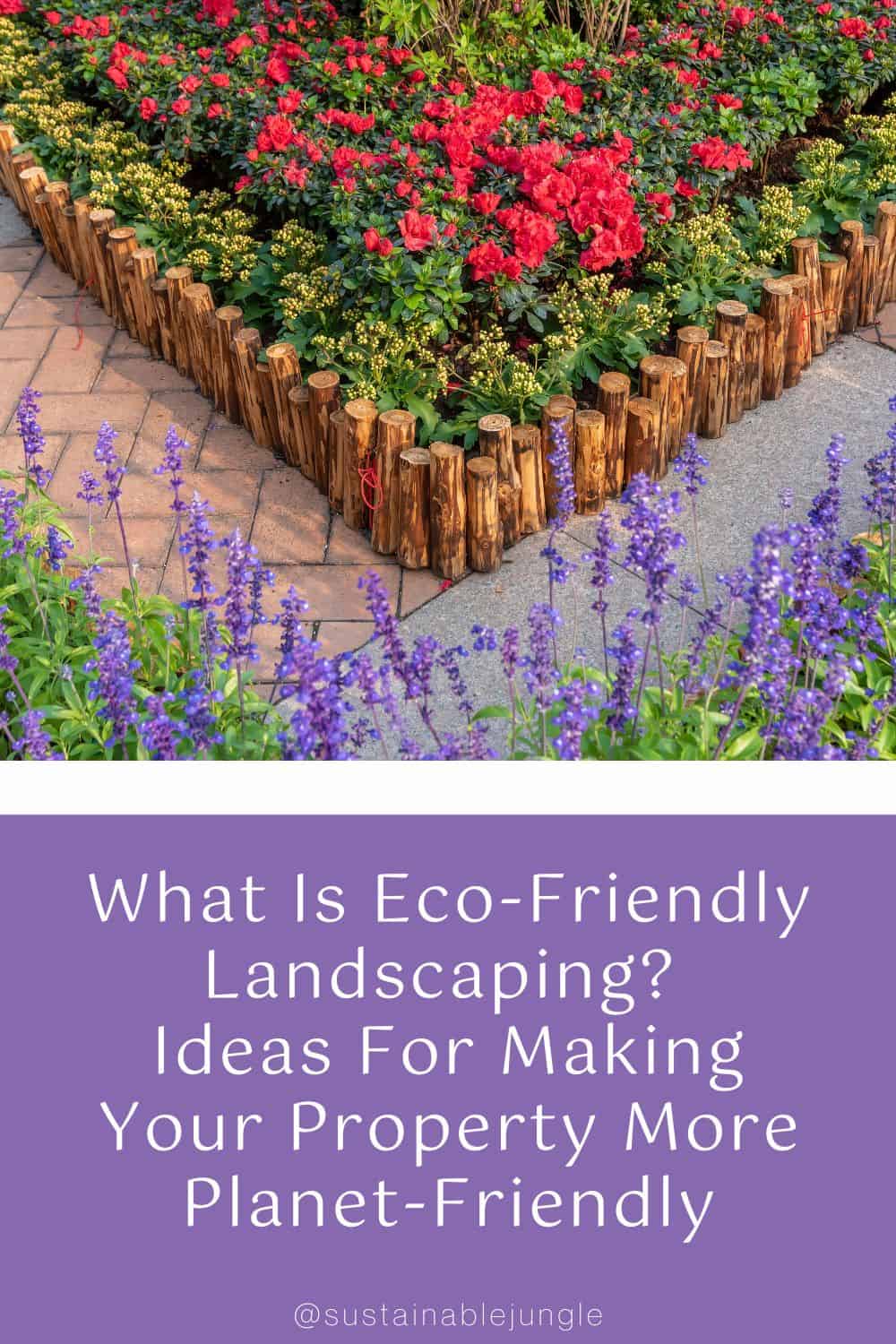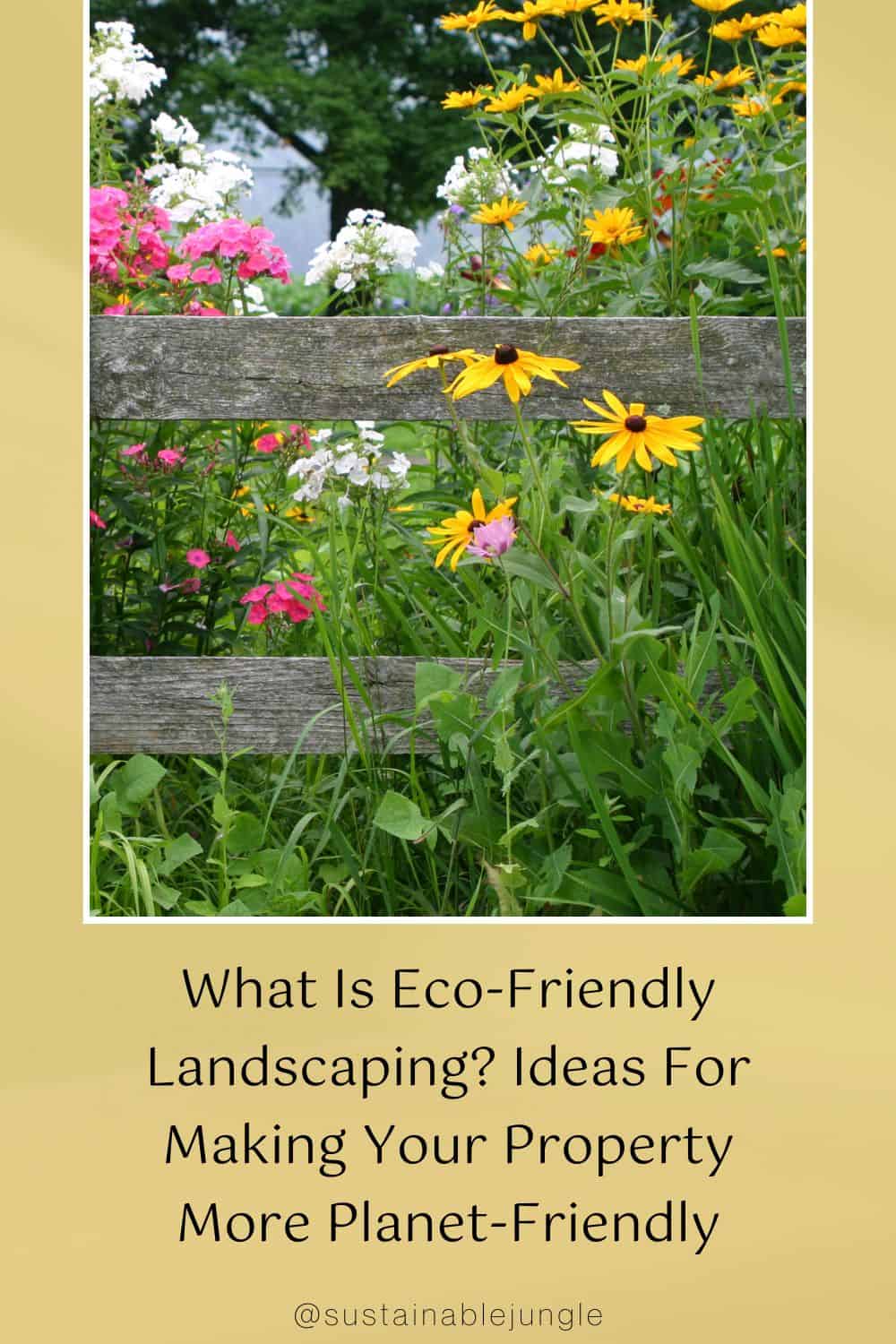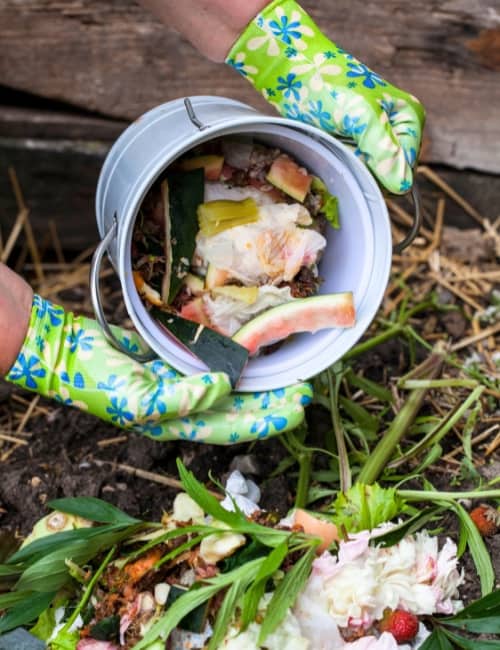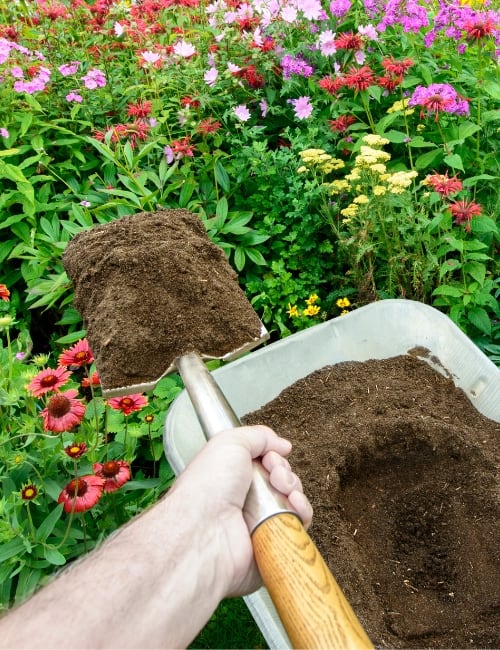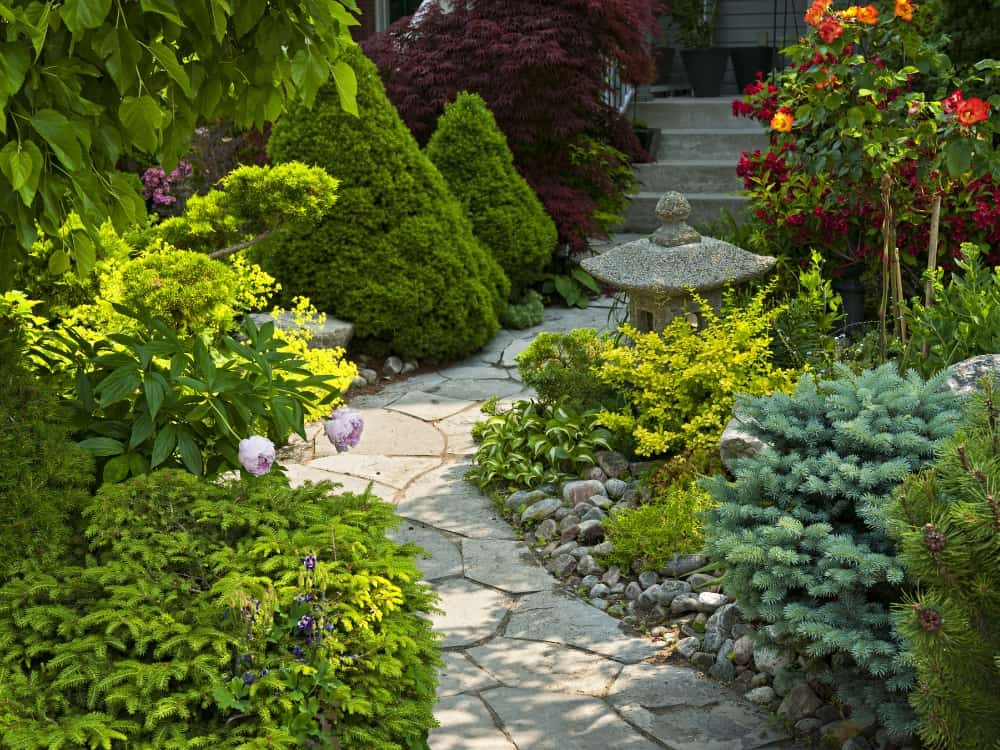
What Is Eco-Friendly Landscaping? Ideas For Making Your Garden More Planet-Friendly
Whether you’re gazing out over 40 acres in the country or sitting on your balcony in the city, chances are, some landscaping has been done around you—though how sustainable remains to be seen.
Eco-friendly landscaping refers to planning, constructing, and planting plants, flowers, and grasses that not only beautify a space, but facilitate erosion control, create a green space for activities, and provide a food source for you and beneficial bugs.
With the introduction of non-native plants (with hidden alien insect invaders) used in landscaping, 42% of threatened or endangered species are at risk due to invasive species.
Not only do these non-natives introduce pests and disease, but the general upkeep and maintenance of a non-native plant in the wrong zone can be taxing on resources—and your back!
When sprawling, green expanses of land complete with native trees boasting naturally resistant abilities to bugs and weather are turned into concrete jungles with artificial grass (or no grass at all), our insects and animals become displaced, effecting ecosystems globally.
Between the insect crisis, invasive species, and water waste from conventional lawns and landscaping begs the question as to why sustainable gardening and landscaping aren’t more mainstream.
Let’s em-bark on a journey into your future eco-friendly yard to learn how to give it an eco edge (perhaps using some landscaping edging).
1. What Is Eco-Friendly Landscaping?
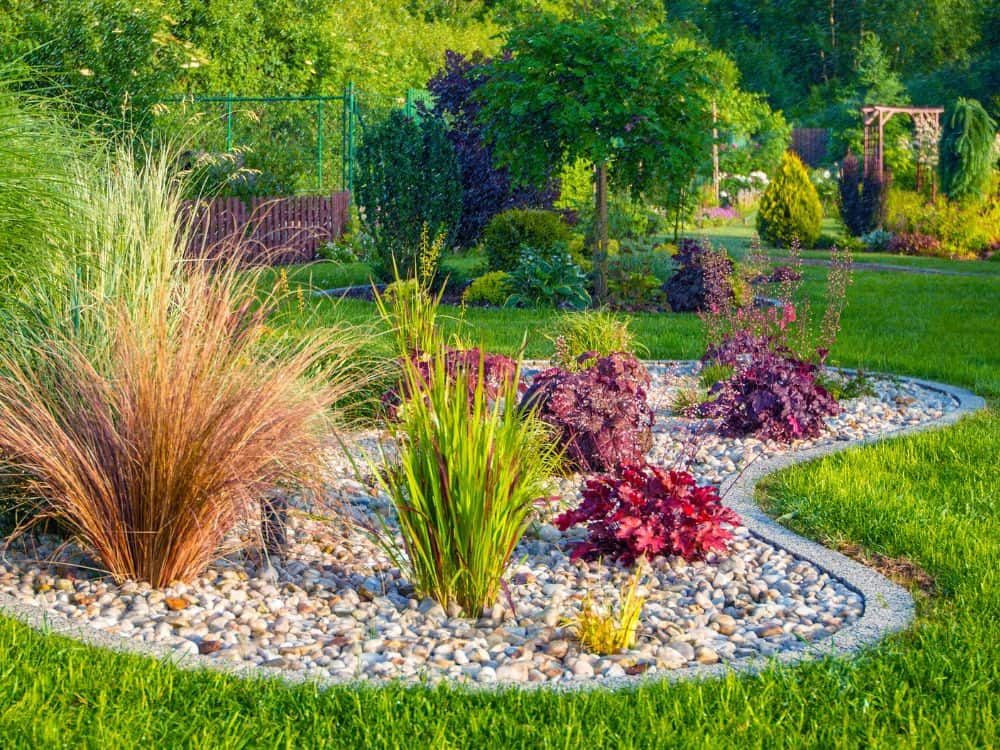
What is eco landscaping and what does it hope to accomplish?
Eco landscaping is the practice of designing and maintaining outdoor spaces in a way that minimizes negative impacts on the environment while promoting ecological health.
While ecological gardening is certainly one component of this, green landscaping and eco-friendly practices behind it aren’t limited to the garden, but rather seek to improve the sustainability of one’s entire yard and property.
The goal in creating an eco landscape is to create a beautiful and functional outdoor space that simultaneously supports the local ecosystem, conserves resources, and reduces the carbon footprint of landscaping practices.
Let’s look at some more specific goals it tackles to accomplish this.
Conserve Water
Conserving water is a top priority in eco irrigation and landscaping, considering an estimated 50% of water is wasted outdoors.
Eco-friendly water conservation strives to select low-maintenance plants that require less water. If the plants require more water, water with natural systems (like aquaponics or rain barrels).
If well or city water is the option to water plants, investing in eco-friendly options to change how we water ensures this precious resource is not wasted by a leaky garden hose.
Increase Biodiversity & Protect Native Habitat
As human populations rise, habitat loss and deterioration rise with it, meaning vast ecosystems (including prairies, forests, waterways, etc.) are being replaced with non-native landscaping, crops, and concrete.
This is leading to biodiversity loss on an unprecedented scale—one that rivals the dangers of climate change itself.
Synanthropic species (or those keen to cohabitate with humans) attempting to adapt to our concrete jungle often suffer changes in behavior as their habitats slowly disintegrate or become fragmented year after year.
Green landscaping plants—such as native plants and diverse species—seek to revive and restore natural ecosystems, often through dedicated rehabilitation areas of wild, unmaintained growth.
Create A Self-Sustaining Eco Landscape
Biomimicry solves some of the human world’s most complex issues.
In looking at nature’s design, discovered is very little waste, every part of the system feeds each other or creates something beneficial down the line.
Considering sustainable landscaping rarely leaves waste product, determining ways to use fruit and vegetable scraps and turn them into your own compost continues this self-sufficient cycle.
Recreating this concept through low-maintenance eco-friendly landscaping methods fosters a system closer to nature’s original intent—and leaves you with less work in the long run.
2. Sustainable Landscaping Design
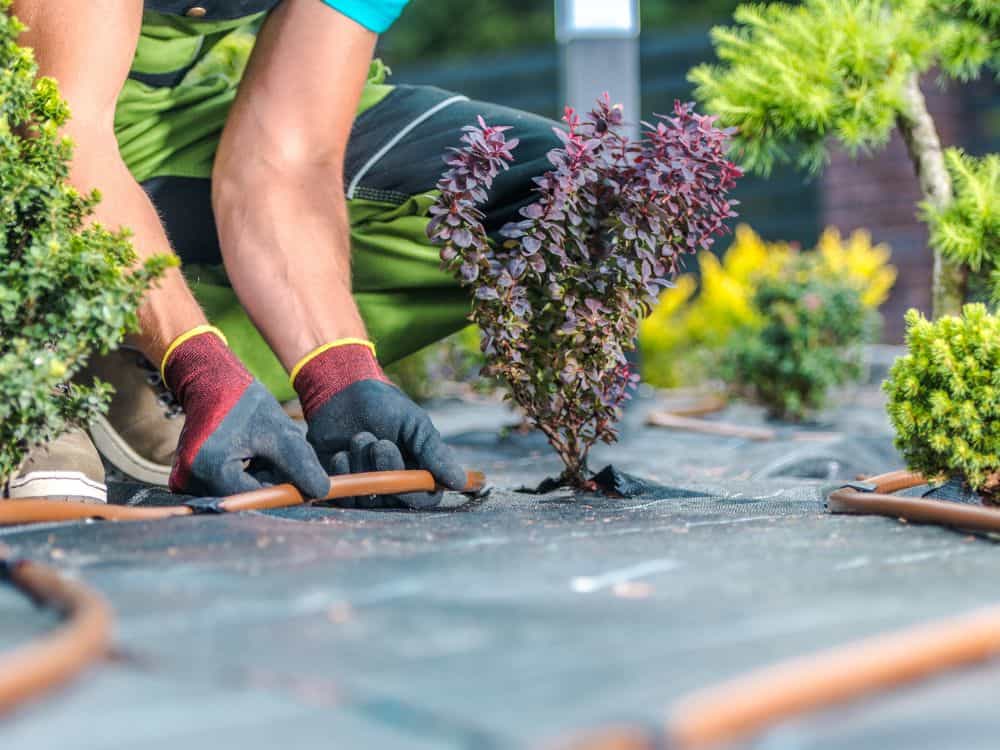
Now that’s we’ve defined the ends, what are the means? In other words, what are examples of sustainable landscaping?
Making Use Of The Natural Landscape
The basis of most sustainable landscape design ideas involves making optimal use of the natural world, including the landscape that already exists and the surrounding climate.
For example, do you know which hardiness zone you are planting in?
Knowing if you’re a 5a or an 8b will save your green landscaping plants from certain bloom doom.
All plants require sun to grow, some love basking in the early morning light in a partly sunny area, while others prefer the hot afternoon sun. Knowing each plant’s requirements and how the sun hits your plot of land and planning accordingly can save on shade clothes.
Much like the sun, your land produces natural water run-offs, make use of these sloped areas to divert water back to your landscaping.
Eco-Friendly Landscaping Materials
The basis of life, soil, is an important part of landscaping, whether you’re planting desert plants or a vegetable garden. The best way to ensure your soil is fed organic materials, free of chemical fertilizers, is to build your own with…
Compost!
The star of any environmentally friendly landscaping plan, compost uses vegetable scraps, grass clippings, yard trimmings, and other compostable organic matter.
That’s why, when it comes to eco-friendly landscaping, outdoor or indoor compost bins are a key feature. Bacteria and heat generated from decomposition then breaks down all these “extras” into rich, nutrient soil you may have to purchase otherwise.
But that’s the basis of your beds; what about the top of them?
While vegetable gardens forgo the need for a top coat, decorative beds and tree wells can be dressed up with mulch, making this one of the most common eco-friendly landscaping products.
Your local arborist or wood mill may have cheap, untreated organic mulch options, wood chips, or wood shavings for pathways or beds.
Regardless of how pretty the rose is, the thorn in all landscaper’s sides is finding a suitable mulch that suppresses weeds, but still feel soft underfoot. Here are some options:
- Cedar bark mulch releases a natural insect repellent oil (instead of purchasing non-toxic bug spray) keeping your plants safe from unfriendly bugs. Cedar bark mulch does mat quickly, so you will need to aerate regularly to allow air flow.
- Pine mulch doesn’t mat as quickly as cedar and can help to feed your flowering plants.
- Hemlock bark mulch, has a vibrant color that won’t fade in the sun while adding nutrients like vitamin C into your soil.
As bark mulch breaks down, it does steal some of the nitrogen and can rob your growing plants of it, so be sure to check with your local landscaping companies for your best organic mulch option.
Choosing natural materials like straw and hay (checking with local farmers in your area who have set aside that they don’t plan to use with their livestock!) is an excellent way to keep the sustainable, low-waste landscape design going while building your soil.
Alternatively, sign up for Chip Drop, which puts you on a list of arborists looking for free wood chips. If someone near you has some available, they’ll deliver them to you at no charge.
Natural Fertilizers & Soil Amendments
Garden centers are typically full of soil amendment options, like bags of peat moss, perlite, lime, kelp meal, bone meal, and blood meal—but is it possible to have too much of a good thing?
Yes. In fact, before adding anything to your soil, it’s best to test your soil to determine which additive it would benefit from.
Natural fertilizers like compost feed your plants while adding organic matter to the soil. Certain soil needs a pH balance, whereas some needs additives for drainage, so purchasing a soil testing kit may be necessary.
Eco Irrigation & Natural Water Systems
Whether you’re planting a few deciduous trees amongst a rock garden or a bed of creeping perennials, they will need supplemental watering.
Determining how to irrigate with water conservation in mind saves money and prevents water waste—which especially important in trying to make desert landscaping eco-friendly.
What is the cheapest type of landscaping?
Any kind that minimizes water sourced from city or metered networks, like the aforementioned design that places more water-intensive plants at the lowest points of your property to maximize rainwater benefits.
Capturing water in a rain barrel attached to your house is another low-maintenance option with little chance of water pollution. Consider adding a screen or filter (or some suggest strands of lemon grass in your catch tank) to prevent bugs from laying in the stagnant water.
If set up correctly, your rainwater runoff could be used on a gravity-fed system, completely eliminating drawing water from a well.
Aquaponics is used to grow nutritious vegetables in a full-circle system. In landscaping, water can be cycled out and into an adjoining bed to feed and water plants.
If using an eco irrigation system, energy-efficient options attached to your garden hose are available to conserve water.
3. Eco-Friendly Landscaping Plants
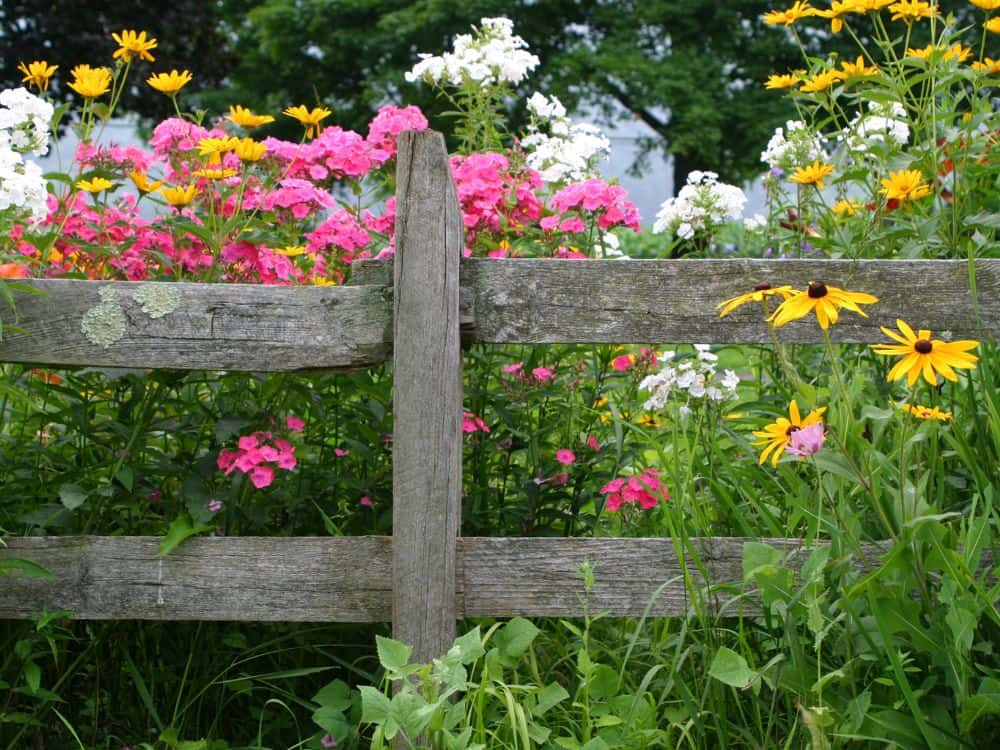
Once you’ve planned out your sustainable yard ideas, you’ll need to populate your plans with plants. There are two main categories of plants to consider:
- Perennials are a landscaper’s dream, as they offer the “one-and-done” approach. Planting an immature perennial like clematis and watching it return yearly, climbing and crawling on the lattice to provide shade and privacy.
- Annuals used in landscaping can provide a vibrant pop of color while attracting beneficial insects, and aid erosion control. Consider adding these flowering beauties to your green landscape design: petunias, sunflowers, and zinnias.
Low-water requirement plants like cacti and succulents are excellent in supporting zones to limit water usage and deciduous trees shoot deep roots that require little supplemental watering once properly established.
If landscaping doubles as a food forest for your family, using edible plants and shrubs like blueberry, raspberry, and blackberry, produces yearly and provides a makeshift border or fence.
Eco-friendly herbs like echinacea, lemon balm, and mint are considered “good bug blooms” that can be dried for tea while beautifying your landscape.
Wildflowers and native plants smell wonderful, while benefiting the environment and your garden beds. Planting native plants, trees, and shrubs, attracts beneficial insects that would otherwise fly over artificial grass.
Plus, mature plants can often be split and made into two or more as you find the need for more plants.
If you’re unsure how to choose native plants for your area, take a quick stroll through the forest or visit Native Plant Finder (and learn how many species of butterflies a native species attracts!).
Consider adding some cover crops like buckwheat to the mix to help shade more sensitive plants from the sun and reduce how much your soil dries out in the sun.
4. Eco-Friendly Yard Ideas
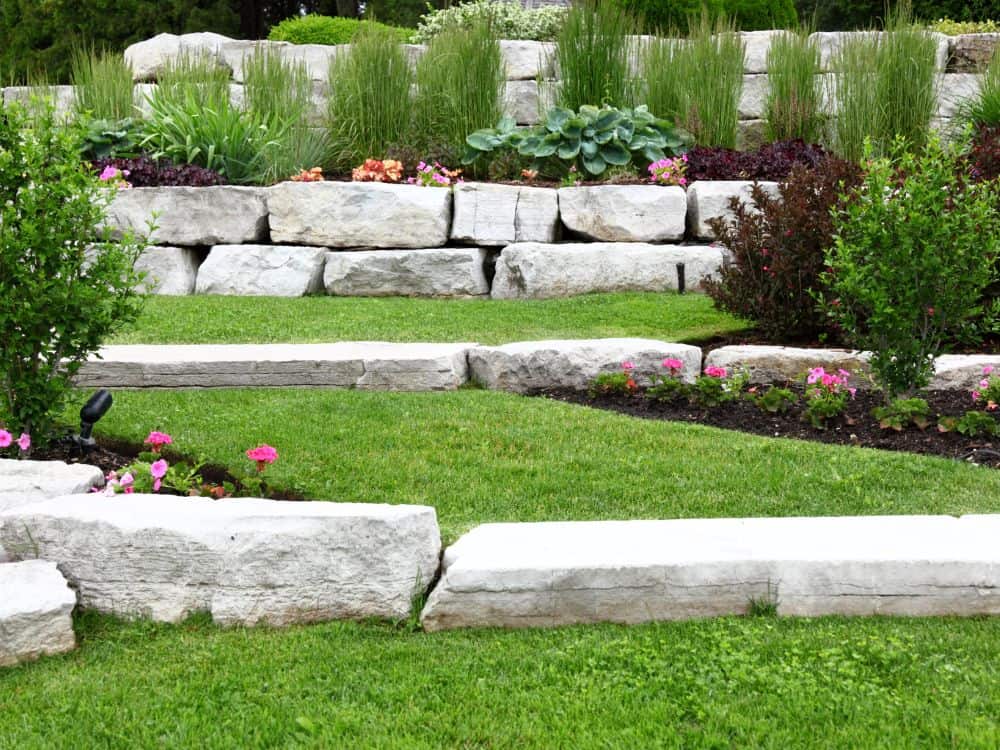
What is the most environmentally friendly yard, you ask?
One that’s not a yard at all—at least not in the traditional white picket fence and green grass sense.
Grassed lawns were once (and still are in some areas) a staple in attractive, stately homes as a measure of social status.
The problem with golf-green lawns is that mowing and maintenance to it favors grasses and prevents flowering stocks from growing.
Depleting the water supply using inefficient sprinklers, instead of harvested rainwater, further exacerbates an already inefficient and unnatural land design.
Beyond the blades of grass often lies a system of imbalance with lawn disease issues like lawn grubs, herbicides, pesticides, and the very chemicals in stormwater runoff that lead to water pollution.
While status may play a part in greenwashing our lawns, a common area for entertaining, tossing a soccer ball, and hosting a BBW is also the catalyst for clean-cut, weed-free lawns.
What if we told you green backyards don’t have to be green?
With as many as 1 million plant and animal species at risk of extinction, many new sustainable seed companies are now introducing groundcover lawns (that you can still stroll on with bare feet!) to support our insect and small animal populations.
Incorporate moss and ground cover plants like creeping thyme and that hugs your wildflower borders for a colorful display during all beautiful lawn dependent activities.
Or you can lose the lawn altogether and create a unique rock garden populated with hardy, drought resistant perennials. Not only do rock gardens not require watering (or mowing!), but they act as permeable surfaces that prevent soil erosion.
Rocks of all different sizes provide natural decor, but you can add things like salvaged driftwood and other clever garden recycling ideas to dress up any drab areas.
If you’re not ready for a full rock yard, try it out in some eco-friendly median landscaping to see how you like it.
You can also take steps to make a traditional lawn more eco-friendly by reducing how much it needs to be watered. Planting trees can eventually help shade it and a good spring aeration encourages earthworms and good water retention, keeping your lawn moist longer.
5. Increasing Biodiversity With Eco Landscaping
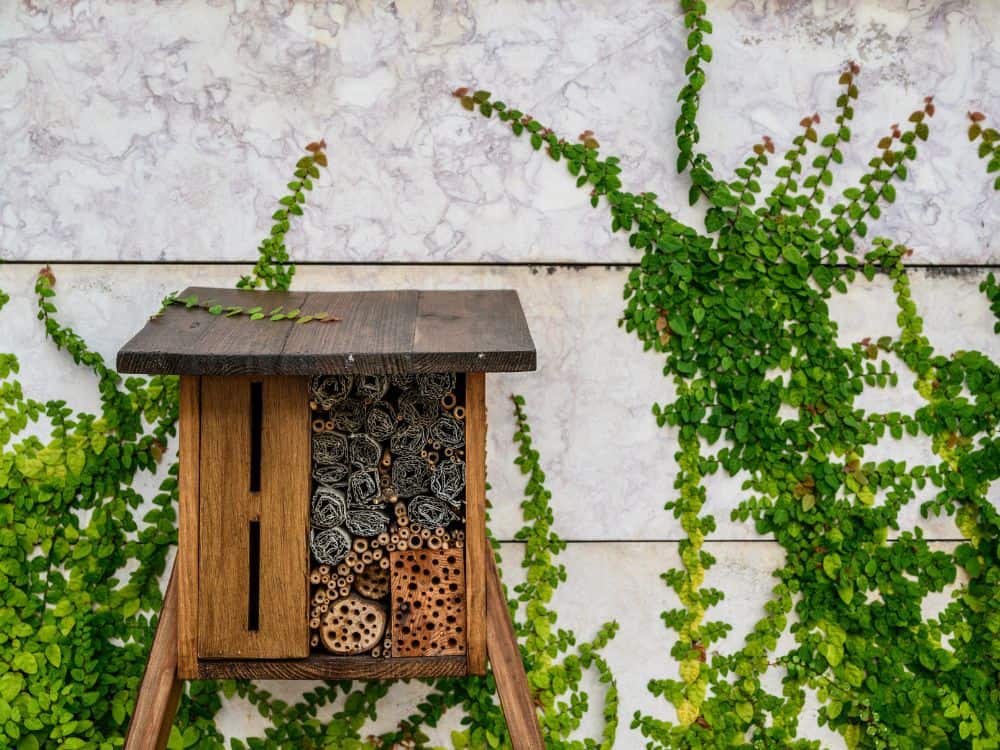
An artificial lawn transformed by creeping ground cover is an excellent start to increasing biodiversity, but if you want to go above & beyond (or below) for beneficial critters and crawlers, expand on your sustainable landscaping project by adding extras:
- Bug hotels: Build your own or buy an insect hotel or home to support your local pollinators while they balance (and remove) local pests. Natural pest control saves on cash and mimics nature’s balance.
- Bat houses: Speaking of bugs, local pests like mosquitoes can turn your landscaped oasis into a feeding ground nightmare, with you as the main course. Encourage bats to clear the air of these biting bugs and discourage them from resting on your roof.
- Bird feeders & waterers: Become friendly with your local feathered friends by discovering their nesting habits and recreating natural habitats in your landscaping plans. Supply a clean, safe drinking water source to birds that may carry seeds and expand your re-wilding reach.
6. Eco-Friendly Landscaping Tips & Tricks
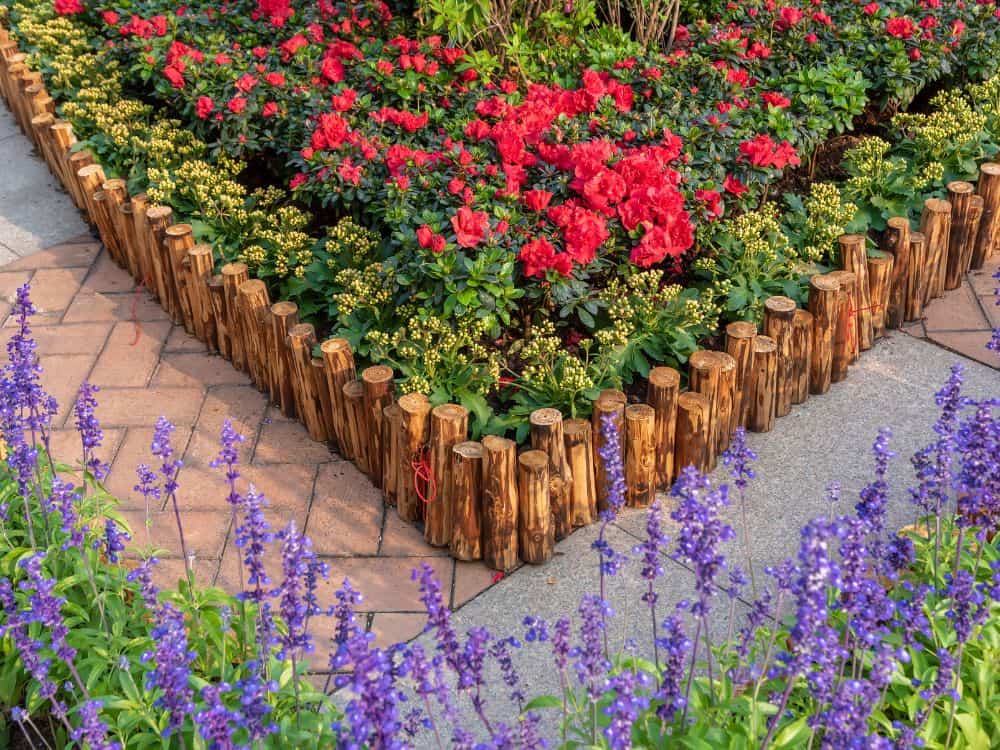
Even the best-laid plans will require a little maintenance to keep up appearances, to help your sustainable landscaping along, try these tips and tricks.
- Weed often: Pulling rogue weeds as they pop up will discourage a weedy takeover of your recently planted beds.
- Overwinter plants properly: Just because a plant thrives in the middle of summer doesn’t mean it will return if winter is too harsh. Learning proper over-wintering techniques will save your plants and pocketbook.
- Install wildlife fencing: A landscaping oxymoron, but we want to increase biodiversity by keeping some critters out. Certain wildlife (like deer, raccoons, and skunks) make light work of a freshly planted garden bed, or immature tree bark. Fencing out these destructive animals can benefit the native ecosystem as a whole.
- Motion activated water systems: If fencing is not an option, motion activated, energy-efficient water systems with catchment can deter wildlife from feasting on your edible fence line.
- Plant pest deterrent flora: Aromatic plants can deter garden pests. Discovering which compost crusader is chewing on them can help in deciding what to plant to combat the issue. For example, the smell of lemongrass can deter rats and mice. While onions deter moles and deer from nibbling on the smelly plant, or any nearby.
- Employ feathery friends: If you keep chickens for your early morning breakfast supplier, consider putting them to work in your landscaped areas. Chicken tractors serve as a multipurpose weed eating option and integrated pest management system while depositing free fertilizer along the way. Plant ground cover behind a chicken tractor and watch as the ground cover hugs each patio paver, garden stone and bush without overtaking the entire system.
Remember, sustainable yard ideas incorporate many systems, with little outside input so keep nature’s own processes in mind as you plan and plant.
Did you know we Have a Newsletter?
We cover the latest in sustainable living, fashion, zero waste, beauty, travel, finance and more…
Final Thoughts On Sustainable Landscaping Ideas
With the growing concern for our local ecosystems, waterways, and carbon sequestration, creating a diverse, environmentally friendly landscape is a step in the right direction for each household globally.
But there’s no rush to transform your entire eco-friendly front yard overnight. Tackling green projects in succession prevents burn out and ensures all the best practices are in place.
Whether your focus is harvesting rainwater, building a new compost bin, utilizing natural insecticides or attracting compost making bugs to your vegetable gardens and landscaping spot, green practices in your landscape design benefits the planet.
Start small and grow your grass high—and don’t forget to compost the grass clippings to reduce garden waste.
However you decide to embark on your green landscaping journey, know that you’re supporting and remedying a damaged ecosystem, one bloom or bud at a time.
If your inspiration supply is running low, copy your native environment for time-tested sustainable landscaping tricks.
If it’s too much to tackle on your own, contact your local eco-friendly landscaping companies to discuss the next steps to transform your grassed lawns.
Get your shovel and nutritious compost ready, then share these green gardening goals with everyone on your block and transform a street of depleted yards into an eco-friendly paradise.
Pin these:
